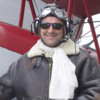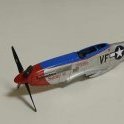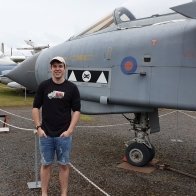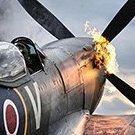Search the Community
Showing results for tags 'Hellcat'.
-
Evening all. Here is my entry for the GB. I originally thought about doing a Hobbyboss F9f but decided to do the Eduard Hellcat as it looks a really nice kit and I've read it goes together well. Hopefully I'll be able to make a start tomorrow when her indoors is watching Strictly. Cheers Allan
-
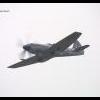
1/48. Some kind of cat. A Hellcat, yes, that's what it'll be.
gingerbob posted a topic in Grumman GB
Place-holder. Probably Wildcat, Hellcat, or Bearcat... Oh, but what about that TF-9J? [Edit: Probably too ambitious for me now, but we'll see...] -

Eduard F6F Wheels (for Eduard Kit) - 1:72
Paul A H posted a topic in Aftermarket (updates/conversions)
F6F Wheels (for Eduard) 1:72 Eduard Eduard's resin rarely fails to impress, and this set is no exception. In the clamshell packed, you get a complete set of resin wheels for Eduard's very own 1:72 Hellcat, itself someone of a landmark kit for the Czech firm. The main wheels have excellent tread detail and flat spots cast in place, while the tail wheel actually includes a complete replacement strut assembly. Paint masks are included for the main wheels. Conclusion It's curious that Eduard have waited until now to release upgraded wheels for a kit that has been around for a few years, but that's no particularly unusual for them. The resin is up to Eduard's usual high standard and the new wheels will make a noticeable difference to the kit. Recommended. Review sample courtesy of -
I've noticed that most (if not all) main efts on Hellcat models have nearly the same color and amount of wear. I would like to know if the efts were changed out irl, or if generally the Hellcat wore the same eft throughout it's life span.
-
GRUMMAN F6F-5 HELLCAT Heller 1/72 Hi all I had this very old Heller kit sitting in my stash for over 30 years. Due it's age it was not engraved panel lines, so I decided to use it as a practice for my first ever try to engrave panel lines in a kit. It was not perfect but I've learned a lot. I had some issues with some seams that were hard do cover even after several re-dos with super glue. I've used only acrylic paints, mostly Gunze Acqueous Paint. The decals were another challenge, due it's age they broke apart once in the water. Luckly I had two set of the decals, so I sprayed a coat of Lacquer clear coat and applied as usual. However, the decals were very transparent so I decided to double up them using the other set of decals, it was not perfect but better than originally. Weathering was made using Tamiya accent panel lines, watercolours pencils and pastels. Overall it looked good but not standing a chance in a model show. I've tried to represent an aircraft part of the Flottille 1F operating on the French Aircraft Carrier Arromanches in Indochina circa early 50's. Reference photos: The model Cheers
- 25 replies
-
- 35
-

-
- ArmouredSprue
- Hellcat
-
(and 1 more)
Tagged with:
-
Which is the best available 1/72 Hellcat today? Built some during 40 years but untill today I never found a kit of quality and without problems. The worst kits have been the Heller and Italeri kits. Both comes with big problems to take care of. When it comes to the Italeri (also reboxed by Revell) there is problems with the engine, bad fuselage/windshield fit and the smal windows behind the cockpit (concerning variant to build - F6F-3 or F6F-5). There are also problems to get the landing gears and the flaps in correct position. https://www.scalemates.com/kits/162227-italeri-1213-f6f-3-hellcat The older Heller kit... https://www.scalemates.com/kits/158931-heller-272-grumman-f6-f-5-hellcat We have kits from Hasegawa, Academy, eduard. And we have the older kits from Airfix, Frog etc. What can be said and written about them? Cheers / André
-
Here's what I hope to build: It's the Profipack boxing of Eduard's F6F-3 Hellcat. By all accounts it is an excellent kit and those I know of who have built it have been very positive about it so I'm looking forward to seeing how it goes for me. I also have the F6F-5 Profipack as well so if this one goes according to plan I might sneak a second build in before mid-July Here are the box contents; instructions and transfers: ... the sprues: ... and the clear parts, etched frets and mask set: I'll sort my paints out presently. There are a lot of alternate parts provided including engine cowlings, tyres and weapons loadouts so I'll need to follow the instructions carefully and watch my step. There are five markings options provided but obviously I will be building Lt Richard Stambook's aircraft based on the USS Princeton because it has a shark-mouth. It was sunk with the Princeton on 24th October 1944. Dick Stambook, a double ace who had previously flown the Douglas Dauntless and the Grumman Wildcat in combat, survived the war and ended his US Navy career with the rank of Lieutenant Commander. He died in 2000. Cheers, Stew
- 74 replies
-
- 15
-

-
After the disaster with the Revell Corsair, I've decided to build a kit, I've built before, in fact a couple of times and a kit I know builds up well. I've already built Eduard's 1/72 Hellcat Mk II Nightfighter and the Hellcat Mk I from the Royal Navy dual kit. I've decided to complete that set by building the Hellcat Mk II. I'll be building the option from HMS Indomitable, used during the battle for Okinawa, the option show in the pic below on the first page of the instructions. In a discussion a good while ago, on Britmodeller, someone said that some of them were used on bombing missions but only carrying a single 500lb bomb on the starboard wingrack. I should have a spare British style 500lb bomb somewhere, whether it be in plastic or resin, so I won't use the kit bombs which are US bombs. You'll see part used etch and mask, on account of me already building the Mk I. thanks Mike
-
Hello, While enjoying this sunny Sunday, I would like to share a bit of sunshine with you along with my latest built model. Actually, it was finished in 2017... It is Italeri 1/72 Gruman Hellcat. It has been enhanced by Quickboost gunsight and Eduard seat belts. The decals are from Aeromaster. Hope you like it. Cheers, Antoine
- 14 replies
-
- 37
-

-
This is my finished F6F Hellcat by Eduard, it was possibly my favourite aircraft I have built so far and everything went together with ease. I would like to note, although it has been six months or so since I made my first 1/48th model and taking my time to do so, as you will tell, I always make a few mistakes with my kits so since I now feel my techniques are close to how I want them to be to get a semi- realistic kit. I let alot of them down with silly mistakes like glue on the canopy etc. and so will be working on making the finished result less flawed. I would like to apologise for the photos, I am yet to figure out how to get the lighting right and do the model justice, I am also sorry for how dirty the desk is with overspray but it was the best I could do with what I had. Hopefully for the next build I will take the time to use a proper camera to try and get some better photo's. Anyway, here it is:
-
Hello Everyone, This is my latest completed model of the Hellcat Mk.I in Royal Navy colours in 48th scale by Eduard. This is also my first submission on the RFI forum so I hope you like it.
- 17 replies
-
- 37
-

-
Hello Everyone, Although I am quite near to the completion of this build, as a new member with Britmodeller I wanted to post my first "Work In Progress" topic for my current project the Eduard 1/48 Fleet Air Arm Hellcat Mk.I. This is the first Eduard kit I have build and have really enjoyed building it, the detail is very good and the kit went together really easily. Sorry in advance for the number of photos.
-
Unless I dreamed it (which is less unlikely than it may sound!), someone recently posted a link to a really excellent webpage with thorough details of the interior colours of USN types, not just Corsairs, Avengers and Hellcats but more obscure types as well. As well as cockpit interiors, it listed cowling interior colours, wheelbay colours, etc. Unfortunately I forgot to bookmark it. Does anyone else recall following this link and could they please remind me where it is to be found (or at least the thread in which the link is found)? Thanks in advance.
-
Hi again fellow modellers, As noted earlier I've recently moved so have not forummed(new word) anything for a while so I'm playing catch-up, so apologies for the amount of topics at short notice. This is Italeri's version of the Hellcat night fighter, pretty straightforward. I rushed it because it was my last build before the move so I'm hoping I've got the weathering OK; gloss sea blue is a challenge for weathering! The aerial in the kit is wrong, it's the forward angled one from the -3 version so fitted one made of wire plus whip aerials dorsal and ventral. I'm not sure but there may have been other aerials on the NF version but seraches on the net did not reveal anything. Paint is a ancient tin of Humbrol gloss blue and I think I put a satin vallejo varnish over it. Anyway here goes:
-
Topdrawings 44 - Grumman F6F Hellcat ISBN : 9788365437563 Kagero via Casemate UK The Grumman F6F Hellcat was a highly effective fighter, the design of which took advantage of experience gained in aerial combat against the Japanese during the early part of the war. Fitted with a powerful Pratt and Whitney ‘Double Wasp’ engine, the Hellcat was a fast fighter, capable of 380mph. The F6F-3 was the first production version and was armed with six .50 inch Browning machine guns. Later in the production run it gained the ability to carry unguided rockets and bombs as well. The F6F-5 was an improved aircraft with a new integral bulletproof windscreen, new ailerons, stronger tail surfaces, and a new 2200 hp engine with water injection. The Hellcat was a rugged aircraft which featured self-sealing fuel tanks and plenty of Armour. By 1945 it had gained the status of the most effective US naval fighter of World War II, having accounted for no fewer than 5,271 enemy aircraft. This book is not a reference book on the Hellcat per-say, but a collection of plans and colour profiles designed to help the modeller all the plans are in 1.48 with a 1/24th scale rule on the pages as well. In the centre of the book is an A-3 double sided pull out plan in 1/48th scale as well. As an extra there is one set of 1:48 masks, and tow of 1:72 in the book. All text is in English & Polish. Conclusion If you're interested in these aircraft and intend to model a few of an individual aircraft then its worth investing in one of these publications. Recommended. Review sample courtesy of
-
Hellcat Mk.I 1:48 Eduard Weekend Edition The Royal Navy received 252 F6F-3s as Hellcat I under Lend-Lease. Production continued until November 1945 by which time 7870 F6F-5s had been built, of which some 930 had been supplied to the Royal Navy as Hellcat II and 1434 of the total had been completed as F6F-5N night-fighters. Ultimately, the Hellcat equipped 14 FAA front-line squadrons. The first Hellcat Mark Is started to be delivered to the Fleet Air Arm on 13 March 1943, FN321 and FN323 arriving three months later, in June 1943 to the A and C Flights of A&AEE, Boscombe Down for service trials by RN pilots, and in July 1943 FN330 was tested by 778 squadron at Crail. Very soon afterwards the Hellcat was distributed to operational squadrons, 800 Squadron received its first Hellcats in batches in July, August and October 1943, and 1839 squadron from December 1943. Not long after this, on 31 August, 1943 the first combat sorties were being flown by the USN VF9 and VF-5 squadrons aboard USS Yorktown against Japanese targets on Marcus Island (Minami-tori Island) some 700 miles southeast of Japan. The first and second batches of 188 F6F-5 Hellcat Mark IIs started to be delivered to the Royal Navy from May 1944, primarily to 1840 squadron. By this time many Hellcats were being shipped to overseas FAA squadrons directly from Norfolk, Virginia, USA to HMS Thane 14 August 1944 and on to RNARY Wingfield, then onto 804 Squadron in September 1944. The subsequent batch of 295 Grumman F6F-5 Hellcat Mk F.II was also shipped directly to RNARY Wingfield in HMS Ranee in September 1944, and on to RNARY Coimbatore. Many of these Hellcats were still in service in Ceylon (Sri Lanka) after the end of the war and into 1946. However, quite a number were surplus to requirement after VJ-Day and dumped in the sea off Australia by HMS Colossus in 1945. The final 293 Hellcat II to be delivered to the Fleet Air Arm arrived between January and May 1945, the very last aircraft, being delivered on 11 May 1945. The Hellcat served post war and some of the earlier batches managed to remain in RN service, in 709 squadron. After this aircraft was paid off it went to Fairey Aviation at Hayes in 1946. Whilst Grumman F.II KE209 remained as the personal aircraft of the Lossiemouth Station Flight Commanding Officer Caspar John until 1952, and the Aircraft Holding Unit in 1954, (this aircraft is now on display in the Fleet Air arm Museum at Yeovilton, Somerset). The Kit The Eduard kit has now been with us since 2008 and has been regularly re-issued in multiple boxings. The moulds still look good today though. Construction starts in the cockpit. The seat, rear bulkhead and control column are attached to the cockpit floor. Next the side consoles and instrument panel are added (a decal can be used for the panel if you don't want to paint it), Once the cockpit is complete it can be added into the fuselage halves along with the tail wheel. Don't forget to open the hole for the centre line tank if you want to use it. Next up the engine is made up. This has two banks of cylinders to which the gear box is added at the front, along with the shaft for the prop. Once complete this can be added to the front of the fuselage and the cowling built up and added over it. Construction then moves to the rear of the fuselage with the addition of the tail surfaces and rudder. The main wings are next on the build schedule. They are conventional upper/lower, left & right. The wheel wells need adding as does the appropriate wing armament before the two sides are glued together. Separate control surfaces are supplied for both wings. Once the wings are on construction moves back to the main fuselage with lights being added to the underside. Next step is the construction of the main wheel bays with some additional details. Following this the main wheels are built up and attached to their legs. The gear doors can then be added. Is using it the main fuel tank can be built up and added. Lastly the canopy, prop, and night fighter radar unit can be added. Decal options are provided for two aircraft as seems to be the norm for weekend editions now. Hellcat Mk. I 1/48 - s/n JV105, No. 800 Squadron FAA, HMS Emperor, Aegean Sea, September 1944 Hellcat Mk. I 1/48 - s/n FN430, flown by P/O Hannay, No. 1844 Squadron FAA, HMS Indomitable, Indian Ocean, August 1944 Each option is illustrated with a four-view profile. The decals, which are printed by in house, they look crisp, thin and glossy and the colours used are nice and bold. Conclusion This is a great kit from Eduard, good to see it in this configuration. Recommended. Review samples courtesy of
-
Having been abroad for some time, without time, space, or the usual array of materials to make any models - I was raring to go when I got home. I had bought a few kits online while away, and they were all waiting for me. I wanted to get back on it with a few straightforward OOB builds, but was also hoping to avoid re-doing any schemes I had attempted before. The two kits I decided to crack on with were the new tool Airfix Hurricane (trop) and one of the two Hellcats in Eduard's combo boxing. Both in 1/48. First up the Hurricane. This is a lovely kit, a real joy to put together. There was nothing all to report as far as issues go, aside maybe from the main landing gear's attachment to the gear bays being surprisingly shallow... But that was nothing a night of drying didn't fix. I usually just like rock-solid, deep wheel attachments. I opted for the box's suggested 2nd scheme - the Rhodesian training markings. This would avoid repeating a BoB or similar scheme - which I am a little bored of. This was painted using rattle cans : Tamiya's TS-80 + AS-12, and a Humbrol rattle can of chrome like paint - used for the most shiny panels on the nose. Decals were from the Airfix kit and went down very nicely, and responded wonderfully to some Micro Sol. The only non-OOB part here is the red gun patching, which was excess from the extras box. Weathering was an oil pin-wash of black and brown, some Tamiya weathering pigment brushed for exhaust stains, and a little Humbrol dry pigment for dust on wheels, walk areas and so on... The second kit I decided to go for something altogether more exotic. I had seen a while ago a photo of some very lurid looking Hellcats, which appeared to be bright orange. I did a tiny bit of looking around and found that these were in fact drones used in post-war a-bomb testing... Some photos make them appear alternatively red, orange, or pink. Either due to different paint schemes, fading, or bad photos... I decided to go for a dark orange to hedge my bets. I am aware that this is an early mark Hellcat, and most likely those used post-war would be late, but as above - I just wanted a fun, quick build, using what was in the box... Further to that - the decals are not aftermarket made for the drones, though these do exist. They are extras from previous Corsair and Hellcat builds. But they seemed pretty close on to the photos I saw of drones. To paint the Hellcat I used MOLOTOW rattle cans. These are made for graffiti - and as a result come in myriad colours and shades. Helpful for someone like me without an airbrush or the ability to mix spray paints. The two tones of orange here are Vermillion (darker) and Lobster (lighter). With the tail painted using MOLOTOW Avocado. Weathering was an oil pin wash. The chipping was done by brush painting patches of Valejo paint onto the sprayed primer and dabbing masking fluid on that before the main colours went down. Annoyingly I just noticed that I took these photos before doing the wing-tip lights. They were done (I promise) using wood glue. Thanks for looking - and as ever - any tips, notes, or criticisms most welcome. Bruce
- 19 replies
-
- 29
-

-
F6F Stencils 1:72 Eduard This sheet sees Eduard continue their line of stencil decals with a set for their excellent F6F Hellcat, which has just been re-released in a new Weekend edition. Even so, this is a generic set which should be suitable for all Hellcats. The sheet is very comprehensive as you would expect, and includes a full set of stencils for the airframe. The sheet is actually the same as that provided in the aforementioned Weekend kit, so you won't need to buy it if you already have that particular version. Conclusion As with their other similar sheets, these decals appear to have been printed in the Czech Republic by Eduard themselves. The sheet is well printed and details are crisp and clear. If you have one of Eduard's Hellcats and you have the patience to apply all of these stencils, then this sheet will provide you with a great finishing touch. Review sample courtesy of
-
F6F-3 Weekend Edition 1:72 Eduard The Grumman F6F Hellcat was a highly effective fighter, the design of which took advantage of experience gained in aerial combat against the Japanese during the early part of the war. Fitted with a powerful Pratt and Whitney ‘Double Wasp’ engine, the Hellcat was a fast fighter, capable of 380mph. The F6F-3 was the first production version and was armed with six .50 inch Browning machine guns. Later in the production run it gained the ability to carry unguided rockets and bombs as well. The Hellcat was a rugged aircraft which featured self-sealing fuel tanks and plenty of armour. By 1945 it had gained the status of the most effective US naval fighter of World War II, having accounted for no fewer than 5,271 enemy aircraft. I remember reviewing Eduard’s 1:72 Hellcat when it was first released, and it's hard to believe that six years have passed since then. This kit is still very much a spring chicken in modelling terms, and very much state of the art as far as detail and engineering are concerned. Inside the top opening box are 74 plastic parts spread across three grey sprues and one clear sprue. As this is a ‘Weekend’ edition, there are no photo etch parts or canopy masks, but you do get two decal options and a full set of stencil decals. The quality of the plastic parts is nothing short of superb, making this kit something of a bargain. The engraved detail on the surface of the airframe is up there with the best that I have ever seen. There is an intelligently designed blend of recessed panel lines on parts such as on the flying surfaces, and overlapping panels on the rear fuselage. The mouldings are all clean and crisp, with no traces of flash or sink marks. The rest of the kit doesn’t disappoint either. The cockpit is beautifully represented and features delicate, raised details. The main landing gear bays are of convincing depth and are also beautifully detailed. The wings fit into recesses in the fuselage sides, so there should be no join to fill at the wing roots and misalignment of the wings should be all but impossible. Two choices of tyres are provided, each with different tread patterns. Both are moulded separately to the wheel hubs, which should make painting the tyres and hobs nice and easy. The engine and cowling are nicely moulded and Eduard have captured the shape of the lower intake for the oil cooler and supercharger (the famous Hellcat ‘grin’) very well. The transparent parts are thin and clear, and the sliding part of the canopy is moulded separately to the windscreen. Because this is a Weekend edition kit, two schemes are catered for on the decal sheet – an F6F-3 flown by LTJG Arthur Singer of VF-15, USS Essex, October 24-25 1944 (as depicted in the box artwork) and an F6F-3, flown by Lt. Lochridge, VF-38, Guadalcanal, late 1943. Four-view colour profiles are printed in the instructions, while there is a seperate diagram for the stencils. The decals themselves look thin and glossy, so hopefully they will prove easy to apply. Conclusion I’ve said it twice before and have no problem saying it again; this is an excellent kit. The level of detail is superb, the engineering is great but not overly complex and in Weekend Edition guise it is superb value for money. Review sample courtesy of
-
The M18 Hellcat or officially the 76mm Gun Motor Carriage M18. Pics thanks to Dave Haskell.
-
Hello guys; I finished another Hellcat 1/72. This is an Italeri 1/72 that I worked together an Eduard kit. This kit has a complicated built, but the final result is a reasonable Hellcat. I chose this famous FAA version. Thank's for watching! And here, this Mk.I together with the last Eduard Hellcat. Regards;
- 33 replies
-
- 42
-

-
Morning folk's a mojo restorer in the form of Hobbyboss Hellcat,love them or hate them they are cheap and look like what they are meant to represent albeit with their inaccuracies the expert's will spot them but with my limited knowledge the small wheels were the most obvious but for newbies or anyone just wanting to experiment with paint and weathering they are ideal.Thank.s for looking in.
-
Finally got round to building a Hellcat rather than pontificating on here about them. Two queries: Can anyone give me a colour match (FS or Xtracolor would be nicest) for Grumman Gray which ISTR is used for the fuselage interior behind the cockpit bulkhead and the cowling interior? I thought I recalled that a diagonal strut was visible behind the Hellcat rear windows. It is absolutely indubitably present in the upper photo on p.24 of the Detail and Scale 26. However this may be a non-standard installation (Grumman photo, NB also non-standard horizontal frame across side window) and study of photos across D&S 26, Squadron Signal 36 and Squadron Signal Walkround 9 shows many cases when the strut was definitely not present. Is anyone able to comment authoratively on this and in particular suggest whether there is any rhyme or reason as to which airframes it would most likely be found on? A question that comes up on this forum from time to time is when in the F6F-5 production run the rear windows were deleted. I've just noticed that the SS Walkround says (p.39) that it was from BuNo 71662. This would mean that the changeover came in during a batch for the FAA as 71638-71712 became JX815-889 and that logically (ah, you spotted the weakness!) the first without the rear windows should have been JX839. NB this is a bit later than suggested by Barratt Tillman who reckoned the "first 1500-2000 F6F-5s" had the rear windows. This would mean somewhere between BuNo 70492, the 1500th Hellcat, and 70992, the 2000th. In FAA terms this means between JW884 (which 70492 became) and JX740 (ex 71163, the first FAA aircraft after 70992). However "the first 1500-2000 F6F-5s" sounds pretty handwavey to me so it may not be sensible to take him absolutely literally. NB I have not as yet tested these findings against photos of FAA Hellcats, not least because open canopies often make it impossible to tell whether the windows are present or not. [Edit: I tell a lie: more precisely, such limited researches as I have so far conducted have thrown up JX841 B9L of 898 Sq as the earliest FAA Hellcat which incontrovertibly does not have rear windows: see Eyes of the Phoenix p.213.] PS. Detail on Hellcat BuNo/Serial batch correlations from United States Navy Serials 1941-1976, Mar 1977 Reprint, by the Merseyside Aviation Society. PPS. Haven't been exactly deluged by replies to my related post here: http://www.britmodeller.com/forums/index.php?/topic/235019970-late-war-faa-what-harness-type/
-
Hi folk's as far as aircraft go I,ve got bogged down with a couple of large project's(1/32 Heinkel,and a couple of 1/48 GB entries) and the old enthusiasm has gone so I thought let's get back to 1/72 scale with a four ship build with the Eduard 1/72 Hellcat at one end of the spectrum and three Hobbyboss easy kit's at the other.I have the choice of boxed decals plus three from an old Italeri kit with a FAA and French Navy machine included so I can have four different finishes in the build so to kick off until the Hobbyboss kit's arrive I'll start the more complex Eduard kit.Boxart to begin with. This beauty has the parts not only for the N model but the F5F-3 and 5 so I'll choose as the build start's with model and finish.
-
Hello guys; I started this Eduard kit in the end of January. I built this kit and one Italery together. I finished the Eduard last saturday. It’s a beautiful and perfect kit. I used a mix of Tamiya paints. I did the rivets with the rosie the riveter tools Dousek. As reference, I used the L. Bentley plant. I used the Master barrels too. The rest, out of the box. Thanks for watching!



